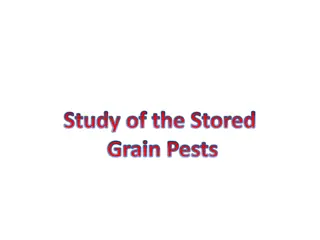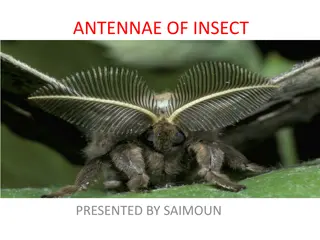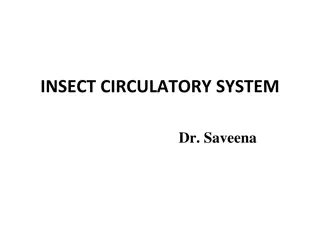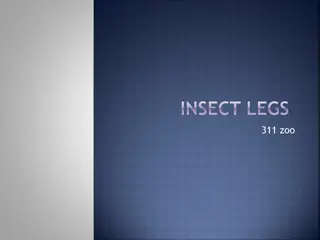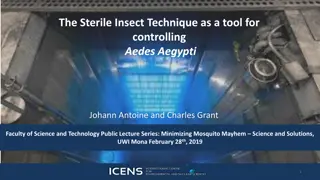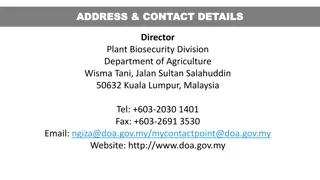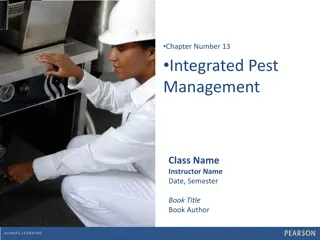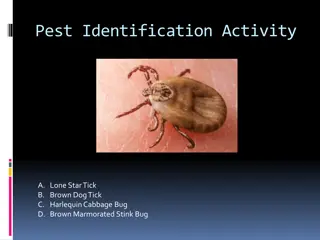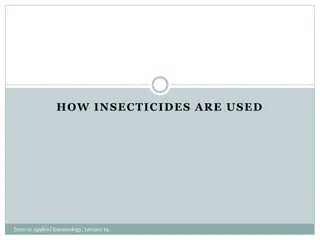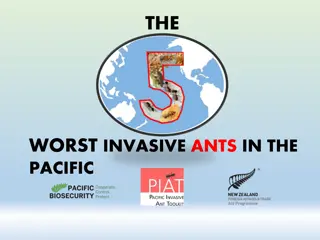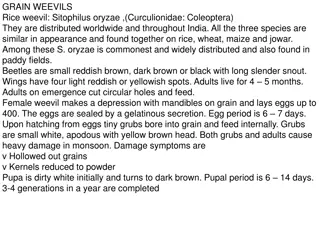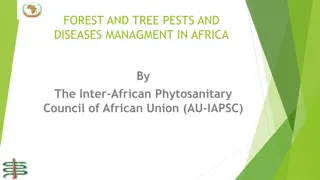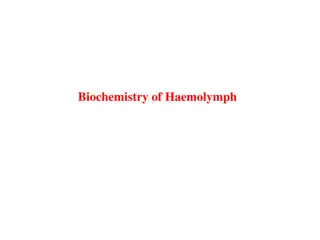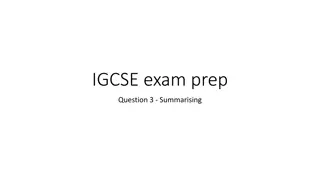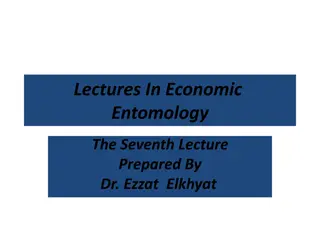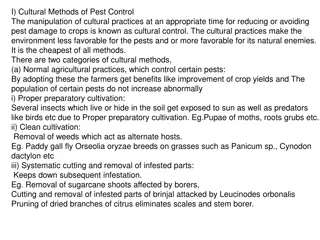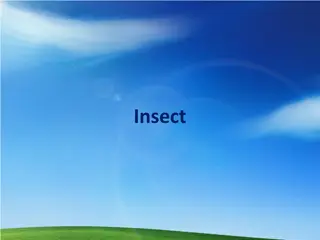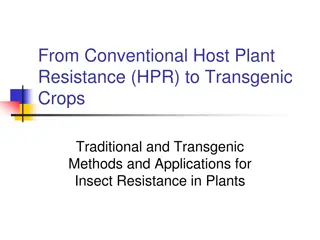Understanding Non-Insect Pests in Agriculture
In this lecture, we delve into important non-insect pests affecting agriculture, such as nematodes, mites, snails, slugs, crabs, millipedes, birds, rodents, and more. Learn about their systematic positions, damages they cause, and characteristics. Explore the world of millipedes and centipedes, their distinct features, and habitats in moist areas. Gain insights into the harmful effects of these land-dwelling creatures and how they differ from insects.
Download Presentation

Please find below an Image/Link to download the presentation.
The content on the website is provided AS IS for your information and personal use only. It may not be sold, licensed, or shared on other websites without obtaining consent from the author. Download presentation by click this link. If you encounter any issues during the download, it is possible that the publisher has removed the file from their server.
E N D
Presentation Transcript
By Dr. Darya H.
So far, you have learnt about insect pests associated with agriculture, forestry and human and animal health. You have also learnt how these tiny insects inflict injuries to target system either by reducing the yield or by spreading the diseases. In this lecture we will discuss important non-insect pests like nematodes, mites, snails and slugs, crabs, millipedes, bird, rodents and a few other animals associated with agriculture.
Non-Insect animal pests In this lecture we will discuss important non-insect pests like Millipedes and centipiudes Mites Snails and Slugs Crabs Nematodes Bird Rodents and a few other animals associated with agriculture.
Objectives List and describe thenon-insect pests of agricultural importance. Explain the systematic position of thesepests. Discussthe damage caused bythese pests.
Characters Main characters of most important harmful non-insect pests (birds, millipeds and centipiudes, crustacea, slug and snail, rodents, Squirrels , wild pigs, (turtles), reptile, livestock).
Subphylum Myriapoda: Millipedes and Centipedes Millipedes and centipedes are not insects. They are actually more closely related to lobsters, and shrimp. Millipedes and centipedes are land dwellers. They are typically found in moist habitats or areas with high humidity and are most active at night.
Description Millipedes are often called 1,000-legged worms or rain worms. They are worm like. With rounded body segments that each bears two pairs of legs. Head is rounded with short antennae. They are typically light brown to black. Species can vary in length.
Description Centipedes are often called 100-legged worms. With one pair of legs on each of their body segments. Have a flattened body. With a distinct head that bears a pair of long antennae. Jaws containing poison glands are located on the first body segment immediately behind the head.
Life Cycle and Habits Life Cycle. Adult millipedes overwinter in the soil, and eggs are laid in clutches beneath the soil surface. The young grow gradually in size, adding segments and legs as they mature. They mature in two to five years and continue to live for several years thereafter.
Nature of Damage Millipedes and centipedes do not carry diseases that affect people, animals or plants. Millipedes do occasionally damage seedlings by feeding on stems and leaves. Centipedes, which have poison glands and can bite, pose an occasional threat to humans. Seedlings at ground level are cut into bits and carried to the holes for feeding.
Control The first and most important step in controlling millipedes and centipedes is removing or eliminating objects that provide hiding places for the pest outside the home. If millipedes or centipedes occur in great numbers or are creating problems, applying pesticide around the building foundation and around doors and windows will provide temporary control.




